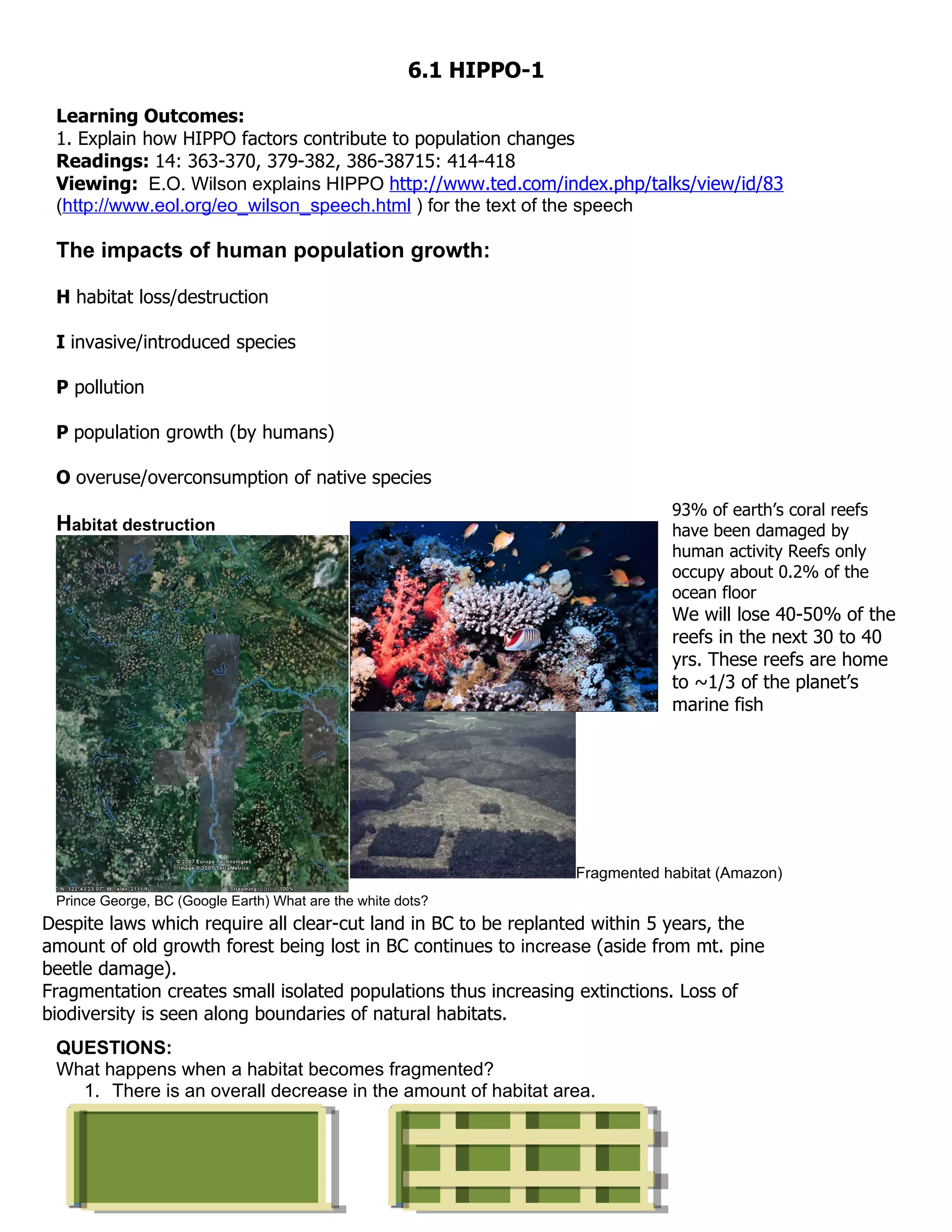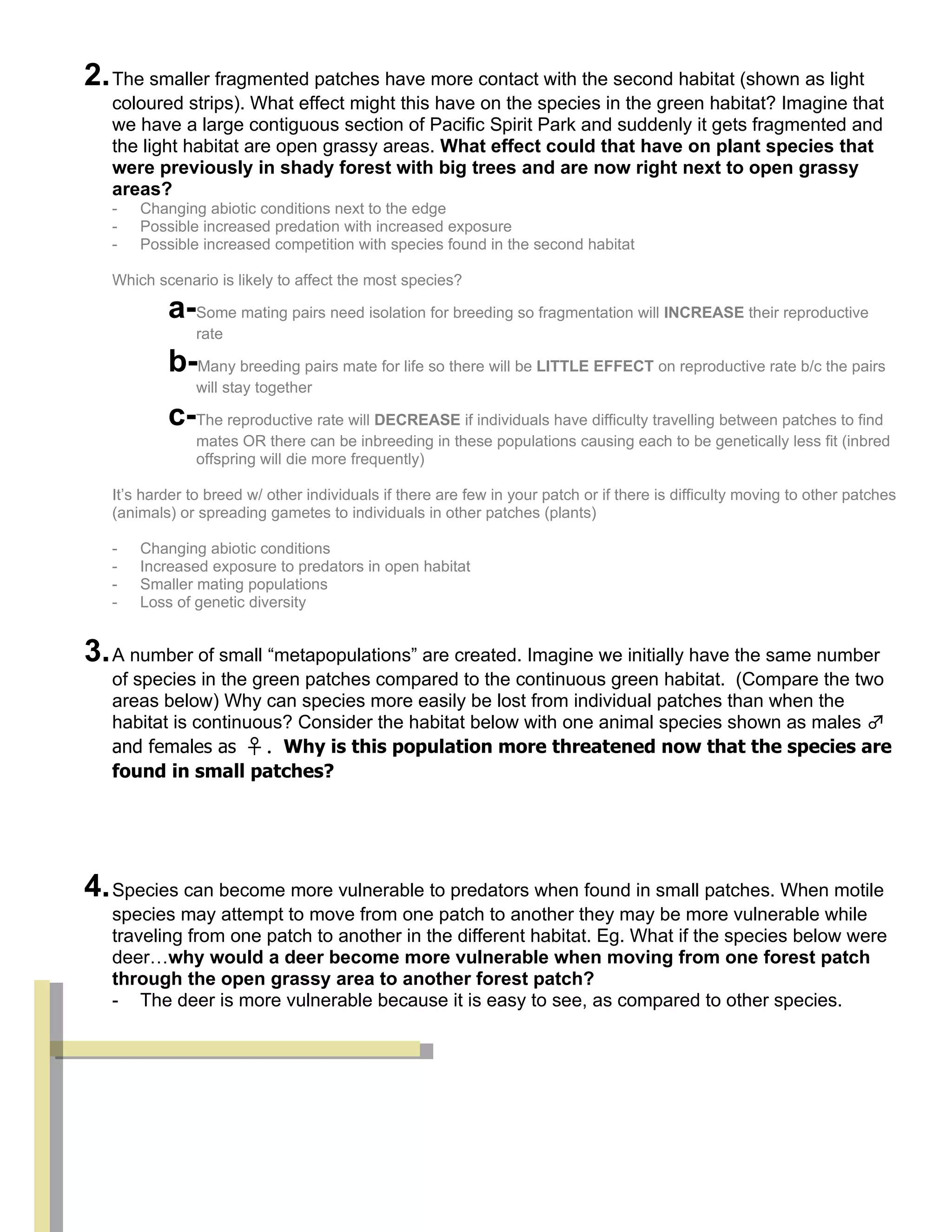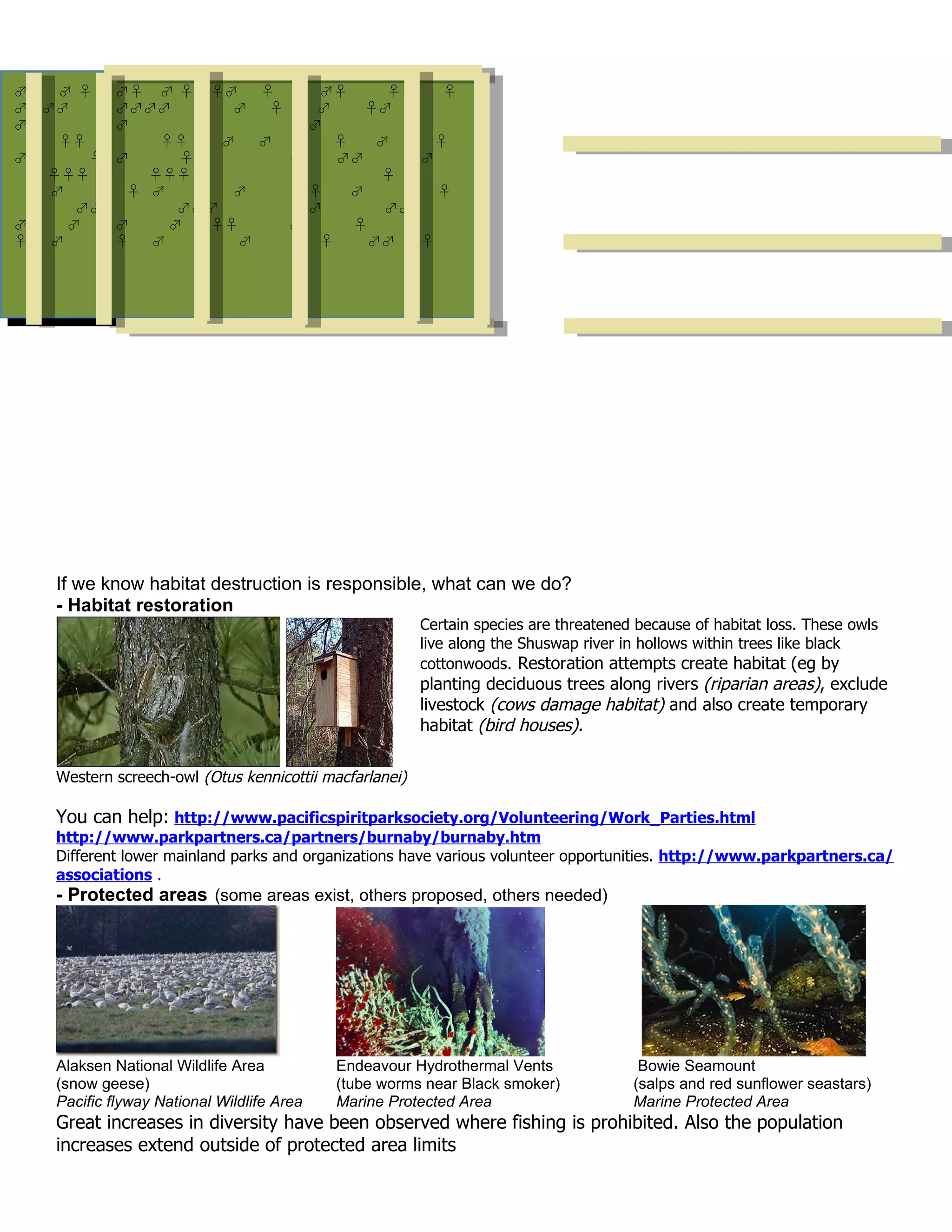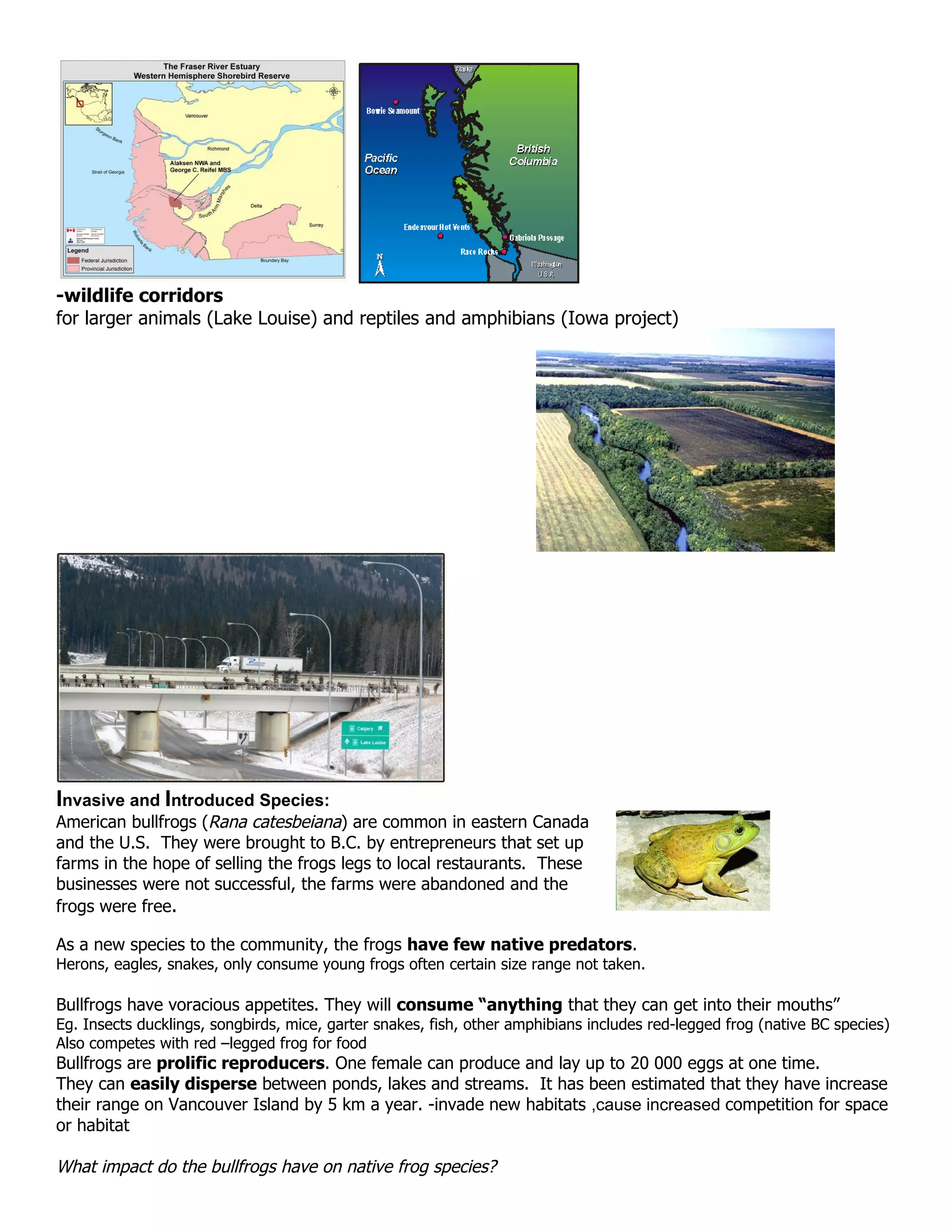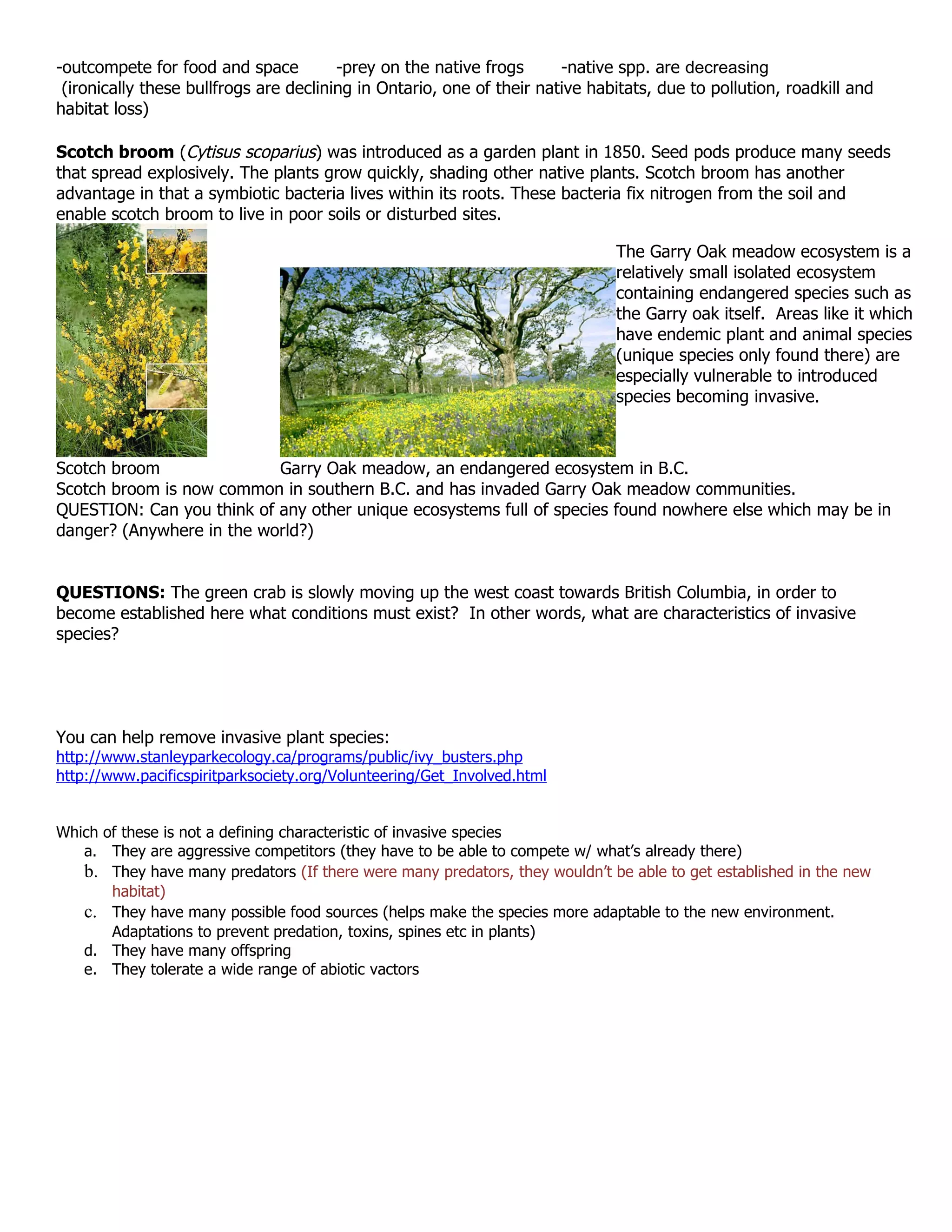The document discusses how habitat loss, invasive species, pollution, population growth, and overconsumption by humans (HIPPO factors) contribute to population changes in nature. It provides examples of each, such as 93% of coral reefs being damaged by human activity, bullfrogs outcompeting native frog species in BC, and scotch broom invading Garry Oak meadow ecosystems. The document suggests some solutions to these problems, like habitat restoration, protected areas, and removing invasive species. It also asks questions about the effects of habitat fragmentation on populations and species vulnerability.
